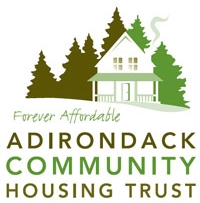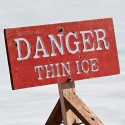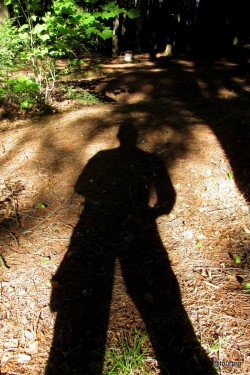 The Adirondack Community Housing Trust (ACHT) announced today that the Hamlets 3 guidebook is completed and available on-line to Adirondack towns and villages seeking to expand the population centers of their communities – the villages and hamlets.
The Adirondack Community Housing Trust (ACHT) announced today that the Hamlets 3 guidebook is completed and available on-line to Adirondack towns and villages seeking to expand the population centers of their communities – the villages and hamlets.
The guidebook and website are the culmination of a two year study conducted by Roger Trancik of Urban Design Consultants that was funded through the New York State Department of Environmental Conservation (DEC) 2007 Adirondack Park Community Smart Growth Grant Program. The sponsors plan to continue the project with a follow-up program, if they can obtain additional funding.
“Hamlets 3 is the model for all towns and villages within the Adirondack Park to utilize as they plan their future,” said Joe Kelly, President of ACHT. “Adirondack Community Housing Trust is proud to have been a sponsor of this valuable project.”
“The unique, rugged and attractive nature of the Adirondack Park, with its wild lands, working forests, waterways, trails, and scenery goes hand in hand with its vibrant, successful mountain communities,” said Robert Davies, Director of DEC Division of Lands & Forests. “The Hamlets 3 guidebook provides Adirondack Park communities with a valuable tool for re-imagining the growth potential of hamlets and developing smart growth projects that will capitalize on the irreplaceable natural resources of the park and attract future investment.”
Many towns in the Adirondacks have concluded that the population centers of their communities have become built-out, have no room to grow, or are in need of an economic boost. ACHT, concerned that built-out and/or waning villages and hamlets increase the difficulties of providing affordable housing and supportive development, sought to study options for hamlet expansion using smart growth principles.
Smart Growth principles include compact, walkable, well-defined hamlets, which maximize use of existing infrastructure; places that provide jobs and housing, high visual quality, transportation choices, and access to nature; places that are based on energy efficiency, resource protection, and sustainability.
Hamlets 3: Planning for Smart Growth and Expansion of Hamlets in the Adirondack Park provides interested citizens, planning boards, not-for-profits, planners, and public officials in the Adirondacks with an easy-to-use, smart growth planning model, principles, and processes for achieving expansion of their community centers. Hamlets 3 is presented in an illustrated guidebook that may be viewed and downloaded at the project website – www.adkhamlets.org. It may also be viewed and downloaded from the Adirondack Park Agency; NY Department of State; and NYSDEC.
The guidebook and website:
- Define and illustrate principles of smart growth;
- Discuss the physical and regulatory constraints on hamlets;
- Describe the fieldwork including details on the hamlets clusters analyzed;
- Present an expansion model for determining smart hamlet growth within the regional planning framework of the Adirondack Park
- Include a step-by-step guide, design tools and scorecard to assist in creating a plan for expanding a village or hamlet in the future using smart growth principles; and
- Offer advice on implementing a village or hamlet expansion plan.
“Hamlets 3 builds on a long tradition of Adirondack Park Agency involvement following the first and second hamlet publications dating back to the eighties, said Terry Martino, APA Executive Director. “ We recognize the value of the hamlet population centers and the need for planning for additional growth opportunities. The study is significant in its presentation of strategies such as Main Street revitalization, commercial reuse, green technologies and walkable communities to enhance community life and economic vitality.”
“Adirondack hamlets are catalysts for regional economic growth, environmental stewardship, affordable housing and community quality-of-life, said Ruth Noemi Colón, Acting NYS Secretary of State. “This guidebook provides a useful road map that respects and enhances the unique attributes of this splendid region.”
The analysis and recommendations in Hamlets 3 are based on a two-year study that used three case-study clusters of Adirondack hamlets to generate and evaluate real-world opportunities for smart hamlet expansion, both within the footprint of the existing hamlet and outside that footprint.
The three clusters of hamlets that were studied are located around Old Forge, Clifton-Fine, and Elizabethtown and were selected because of their geographic dispersion and varied character within the Adirondacks. From these studies, the Hamlets 3 planning model was derived, which is broadly applicable to a wide range of situations throughout the Adirondack Park.
“Participating in the field work during the development of Hamlets 3 guide meant stepping out of our same old existence,” said Robert Moore, Supervisor, Town of Webb. We looked at our community from a new perspective. It opened doors in our minds to new possibilities. It was enlightening and refreshing.”
“This was a fun venture,” commented Mark Hall, Supervisor, Town of Fine. “It combined the reality of what we have with the opportunity to dream of what could develop. The model created by Roger Trancik and his team brought an enviable level of planning professionalism to the Adirondacks.”
“Last summer the Elizabethtown Planning Board had the opportunity to work with Roger Trancik and his brilliant group of young planners when they came to town to work on the ‘E-Town Cluster’ for the Hamlets 3 Project,” said Elena Borstein, Town of Elizabethtown Planning Board member. “We learned about Smart Growth Principles of planning and now hope to put these into our new Comprehensive Plan for Elizabethtown, which hasn’t been revised since the 1970’s. The guidebook is a great tool for planning and for the future of the Adirondacks.”
Although the guidebook and website have been developed, the project is unfinished. The project sponsors are seeking Adirondack communities that want to use the smart growth approach. During a proposed second phase of the project, public training programs and technical assistance courses will be offered to communities that want to implement smart growth projects at the local level. Interested communities can contact ACHT at 518-873-6888.
In addition to receiving training and assistance the communities should be prepared to assemble a committee that can apply the expansion model step-by-step to assess the smart growth potential of their own communities and develop specific local projects to be undertaken using Hamlets 3 guidelines. More details about Hamlets 3 and how communities can participate will be presented at the Adirondack Park Local Government Day conference in Lake Placid on March 23. (www.apa.state.ny.us) Participants in the Hamlets 3 session at Local Government Day will be a given a CD of the guidebook.
Roger Trancik, a Fellow of the American Society of Landscape Architects, is Professor Emeritus of Landscape Architecture and City and Regional Planning at Cornell University. Trancik, and his consulting firm Urban Design Consultants undertook studies of the 130 Adirondack hamlets in the 1980s in conjunction with the Clinton, Essex, Hamilton and St. Lawrence county planning offices and the Local Planning Assistance staff of the Adirondack Park Agency.
Those earlier studies resulted in two publications – Hamlets 1 and Hamlets 2. Hamlets 1 educates non-Adirondackers about the centers of the Park’s communities (the “hamlets”) where most of the population, community services, commerce and employment are concentrated, and their needs for revitalization and investment. Hamlets 2 provide strategies for hamlet revitalization to Adirondack communities utilizing examples of successful endeavors from within the Adirondacks. Both publications won national awards and are widely known in the Park.
DEC’s 2007 Adirondack Park Community Smart Growth Grant Program has provided assistance to seventeen other planning and sustainable development projects throughout the Park initiated by local communities. A second round of funding is currently open for applications until March 18th. For more information on smart growth initiatives underway, or for details on the second round of funding, visit the DEC website at: www.dec.ny.gov/lands/49210.html
,” the definitive guide to the trail. More information is available at www.adk.org and www.nptrail.org.

 The weight of snow has caused ice to sink slightly forcing water from below the ice up on to the surface. Water, in some places up to a foot deep, may refreeze resulting in alternating layers of ice and water all covered by a blanket of snow. The snow acts as an insulator preventing the water from refreezing completely even in very cold temperatures.
The weight of snow has caused ice to sink slightly forcing water from below the ice up on to the surface. Water, in some places up to a foot deep, may refreeze resulting in alternating layers of ice and water all covered by a blanket of snow. The snow acts as an insulator preventing the water from refreezing completely even in very cold temperatures. The
The 


